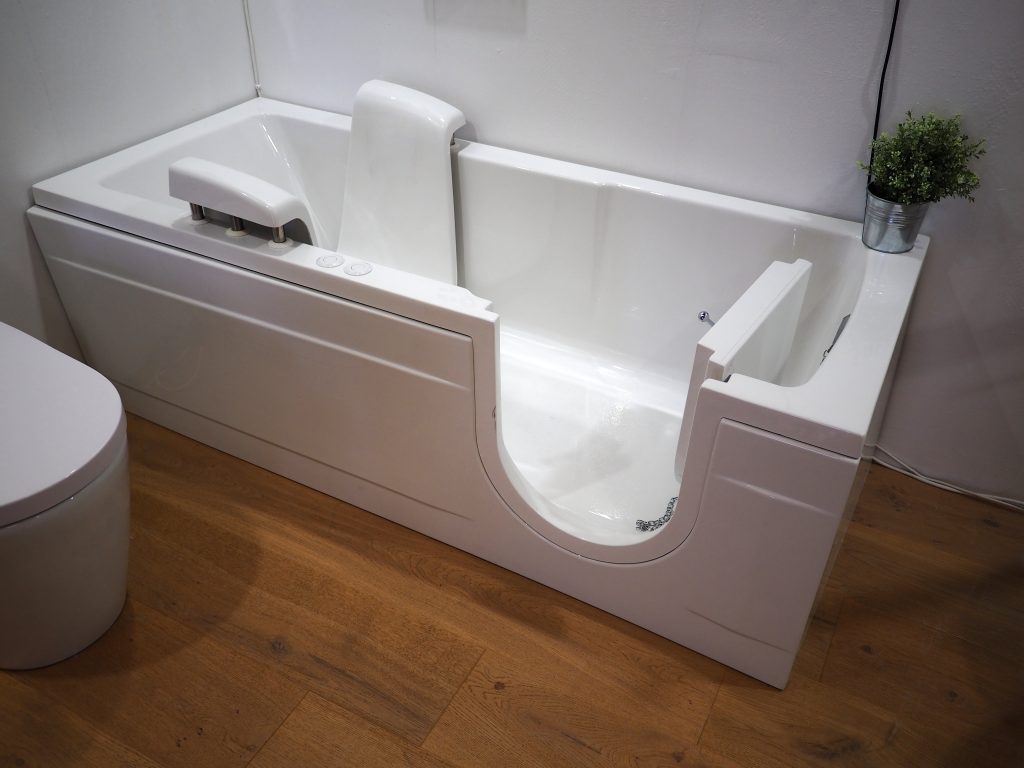A guide to bath hoists & bath aids
Having a disability can often mean major changes to just about everything you do in your life, including things others take for granted like climbing the stairs or getting in and out of the bath. Luckily, there is an ever-increasing number of helpful aids and devices designed to solve these problems and make life easier. In fact, there are now so many options it can be confusing for first timers to know what they need, so let’s take a look at what’s available in the world of bath aids, and how they work.
What are bath aids?
Bath aids are a whole category of products designed to help you get in and out of the bath in a variety of ways, depending on the nature of your disability or impairment. Bath aids can range from simple non-slip mats and handles designed to make using the bath yourself easier, all the way to mechanical bath hoists that do the job for you. Within this segment, the clearest differentiation is whether or not the type of bath aid is designed to be automated or not, which affects both the decision to purchase and how it is used and fitted, so let’s take a look at both.
Bath rails and handles
Towards the more basic end of the spectrum, you will find products such as bath rails, safety rails and safety poles. These are fixed handles and supports that can be placed in and around the bath in order to achieve different aims. Bath rails tend to be simple handles designed to give the user extra leverage and support when getting in and out of the bath on their own and can be fixed permanently or temporarily depending on their use. Similarly, fixed, or moveable safety rails and poles are larger variants that are designed to support a person’s full body weight during their entire time using the bath. These are bulkier and larger than bath rails but have a greater variety of uses. All these products can also be found with extra modifications such as built-in steps or non-slip surfaces.
Things to think about
Bath rails are a good investment for elderly people or people with disabilities causing minor limitations to movement, as they tend to be just an extra helping hand rather than a major intervention. Convenience is a major factor in purchasing a bath rail, as their size means they can often be hidden or removed entirely when not in use. It’s also important to make sure that your bath rail is strong enough to hold your weight, both the rail itself and the wall or fixture it’s attached to.
Bath hoists
Towards the more complex end of the spectrum, a bath hoist can partially or totally remove the effort of entering and leaving the bath from the user. The bath hoist allows the user to be seated in the chair and taken in and out of the bath by a user-operated mechanism, or by an electric motor, depending on the model. One of the major advantages of this system is flexibility, as there are a huge number of options for users depending on the level of disability that the user has, as well as the configuration of the bathroom.

Hoists are available that fit to either end of the bath, as well as to baths that have the taps in the centre or at the end. Users who are severely infirm or have disabilities that limit upper body strength can opt for a model that is entirely electrically powered, whereas more able users may prefer the option that allows them to operate the hoist on their own. As well as these options there are also other potential configurations that make using the hoist easier, such as detachable seats and mobile bases that allow other aids to be attached. For example, some hoists are designed for easier transfer between the hoist and a wheelchair, while others can be attached to mobile commodes.
Things to think about
One potential downside to bath hoists is that they are larger and less flexible than bath rails, and need to be fitted by a qualified fitter. You can usually arrange this via the mobility or disability aid shop that it was bought from, or can be booked online via specialist fitting services. It’s also good to make sure that your chosen model has all the features you’ll need, whether that’s extra grip or an emergency stop button if you live alone. Once you have chosen and fitted your new disability equipment, it’s essential to get it insured in case anything goes wrong. Contact us today to find out about our disability equipment insurance options.
By looking after your bath aids you can minimise repairs, however, there are some things you can’t prevent, such as accidents or theft. We provide insurance for mobility equipment, get a quote today by clicking here.

